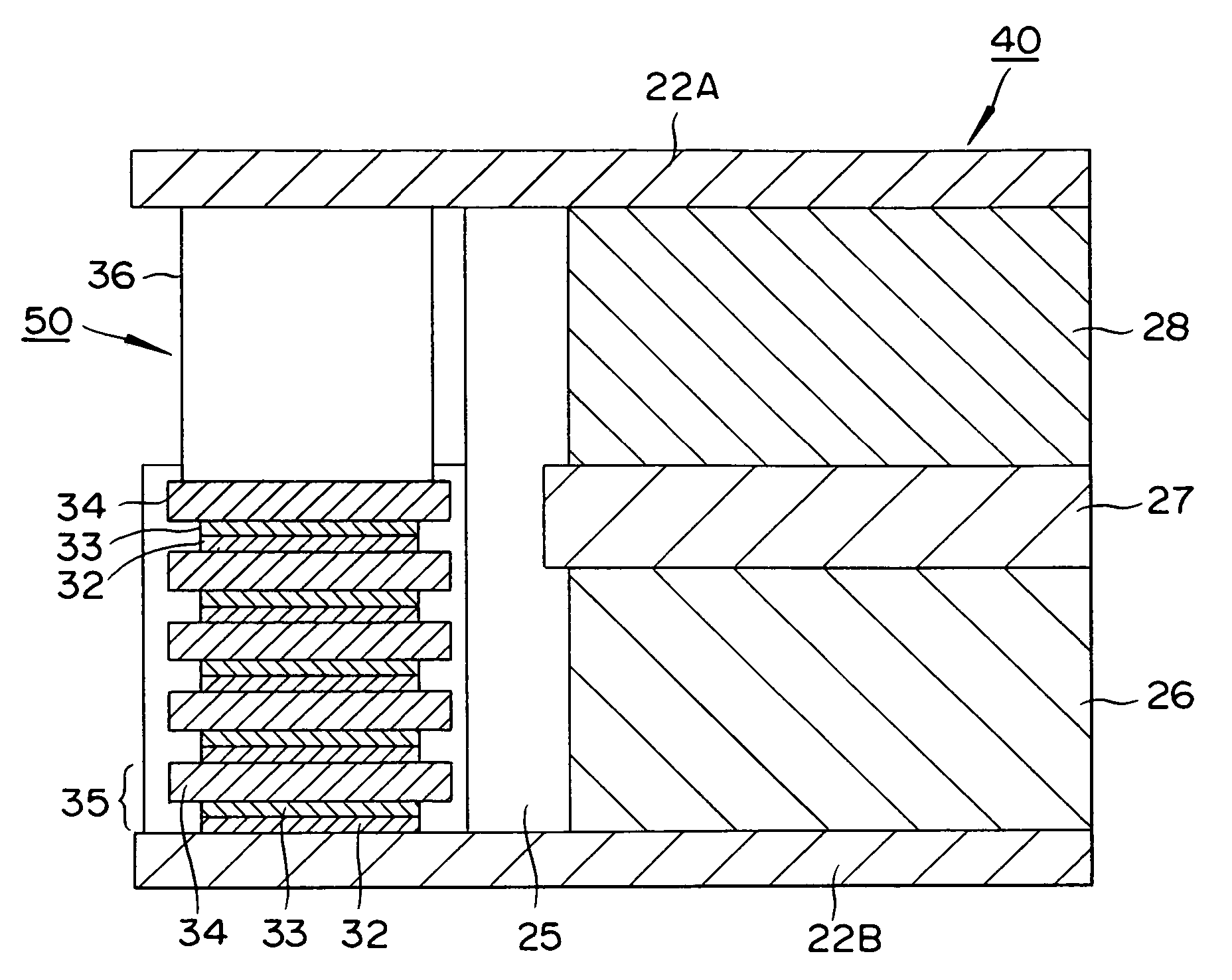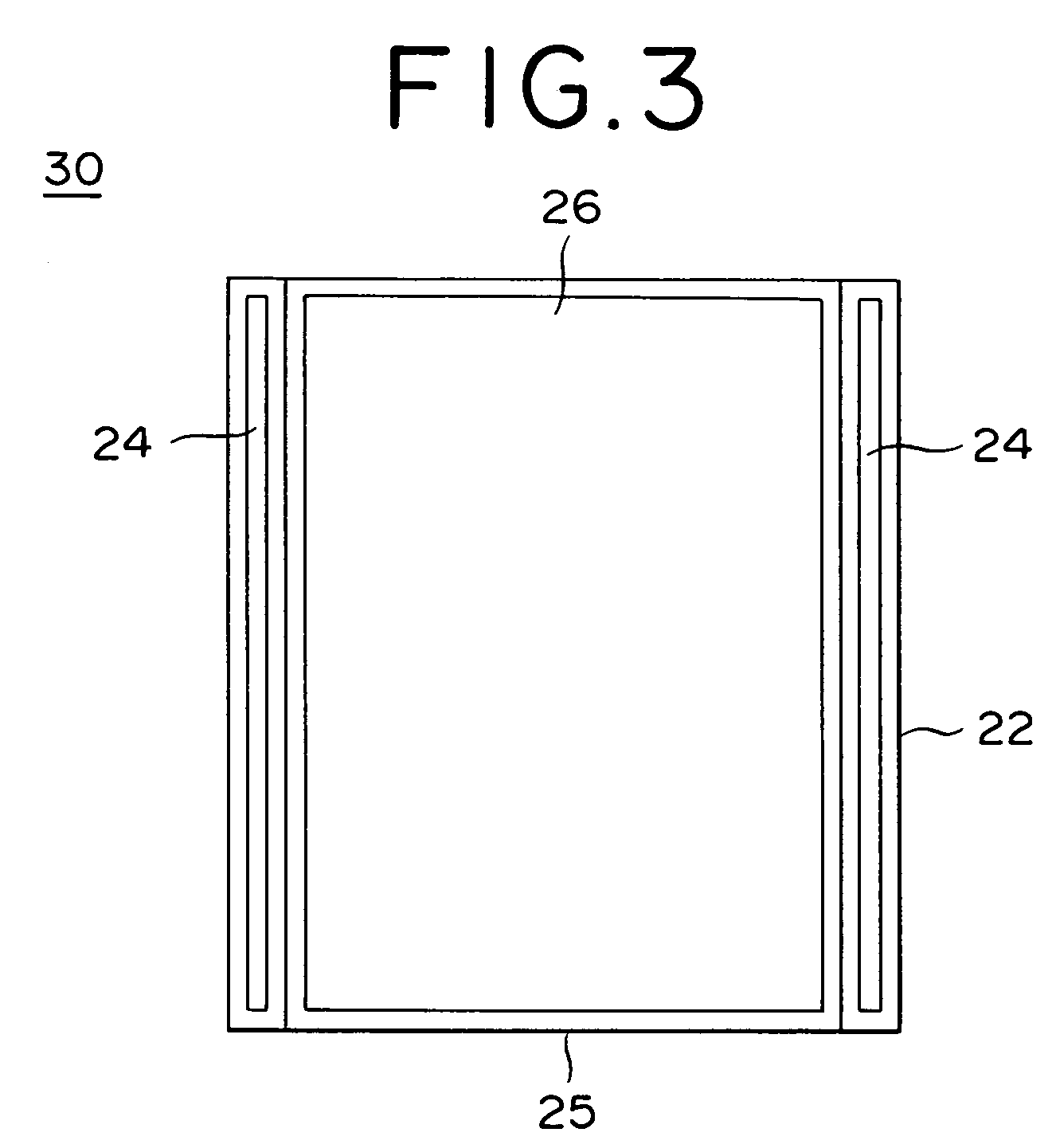Secondary battery
a battery and secondary technology, applied in the field of secondary batteries, can solve the problems of individual battery cells suffering to have their volume dispersed to a certain extent, battery cells having small volumes tend to be rather overdischarged, so as to achieve secure safety and design exaltation, the effect of simple structur
- Summary
- Abstract
- Description
- Claims
- Application Information
AI Technical Summary
Benefits of technology
Problems solved by technology
Method used
Image
Examples
example 1
[0086] A group of diodes was manufactured by connecting in series five 6A Diodes made by General Semiconductor Corp. When a voltage was applied gradually to the group of diodes and the electric current flowing out of them was measured, results similar to those shown in FIG. 6 were obtained. Next, a 20-unit module battery was manufactured by preparing 20 such groups of diodes, connecting 20 separately prepared canned 1600 mAh lithium ion batteries (4.2 V during ordinary charging and 2.5V during discharging) one each in the forward direction to the 20 groups of diodes, and thereafter connecting the individual batteries in series. This module battery was not furnished particularly with a protective circuit. Further, 20 such module batteries were prepared and subjected to charging and discharging at 3200 mA and 50 V of lower limit and 80 V of upper limit respectively of cutoff voltage up to 100 repetitions. Thereafter, the module batteries were examined to find any sign of abnormality a...
example 2
[0088] To each of the module batteries of Example 1, one 6A diode produced by General Semiconductor Corp was connected in the reverse direction. Twenty (20) such module batteries were prepared and were subjected to charging and discharging at 3200 mA and 50 V of lower limit and 80 V of upper limit respectively of cutoff voltage up to 100 repetitions. Thereafter, the module batteries were examined to find any sign of abnormality and tested for 1 C discharge capacity from 72 V.
[0089] As a result, none of the 20 module batteries was found to have induced any leakage and none of them was found to emit smoke. The module batteries had a capacity (average) of 748 mAh prior to the cycles and a capacity (average) of 681 mAh after the cycles. The ratio of the charging capacity to the discharging capacity in the final cycle was 95%.
example 3
[0093] A SUS 316 stainless steel sheet measuring 20 μm in thickness and 20 cm×30 cm in surface area was prepared. A coating material produced by dissolving lithium manganese, LiMn2O4, having a diameter of 10 μm, acetylene black, and a PVDF binder at a composition of 90:5:5 in N-methyl pyrrolidone was applied to the central part, 18 cm×26 cm, on one side of this sheet, and dried to prepare a positive pole active substance layer 50 μm in thickness.
[0094] Next, a coating material produced by dissolving hard carbon having a diameter of 10 μm in diameter and a PVDF binder in a composition of 90:10 in N-methyl pyrrolidone was applied to the central part, 18 cm×26 cm, on the rear side of the sheet and dried to prepare a negative pole active substance layer 50 μm in diameter.
[0095] At the positions 10 mm from the opposite edges of the short side, 20 cm, on the positive electrode active substance layer side of the stainless steel sheet, silver, p-dope silicon, and n-dope silicon were each ...
PUM
| Property | Measurement | Unit |
|---|---|---|
| thickness | aaaaa | aaaaa |
| thickness | aaaaa | aaaaa |
| voltage | aaaaa | aaaaa |
Abstract
Description
Claims
Application Information
 Login to View More
Login to View More - R&D
- Intellectual Property
- Life Sciences
- Materials
- Tech Scout
- Unparalleled Data Quality
- Higher Quality Content
- 60% Fewer Hallucinations
Browse by: Latest US Patents, China's latest patents, Technical Efficacy Thesaurus, Application Domain, Technology Topic, Popular Technical Reports.
© 2025 PatSnap. All rights reserved.Legal|Privacy policy|Modern Slavery Act Transparency Statement|Sitemap|About US| Contact US: help@patsnap.com



